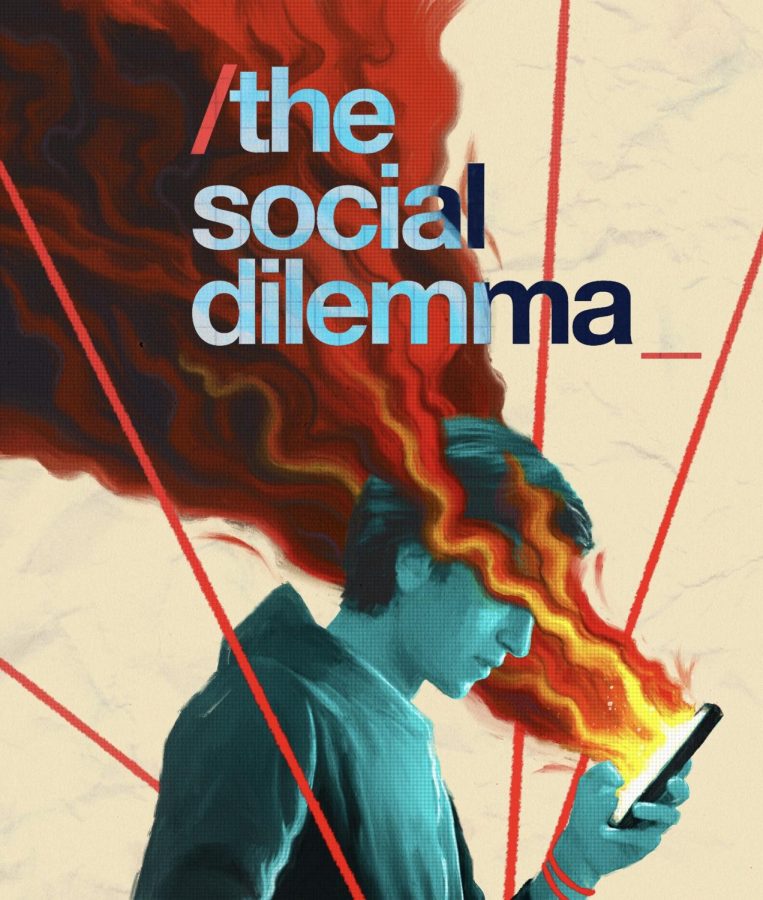“The Social Dilemma” Documentary Sounds Alarms
Netflix’s trending documentary The Social Dilemma has gripped the Campolindo community.
The documentary flips between ex-employees of big social media companies and a fictional family’s struggles with getting their children off their phones. The main theme of the movie is how technology, specifically phones, are designed to keep people staring at their screens as much as possible. The documentary focuses on how social media has hooked teens and how unhealthy this can be.
Senior Zachary Chang, who watched the documentary, said, “The information [from the documentary] that stood out the most to me was how they gave examples of everyday kids like us were being preyed on by these people who work at social media sites.”
A large part of the documentary was how big social media companies sell their viewers’ attention to advertisers. This sentiment is captured by the revelation that “if you are not paying for the product, then you are the product.”
Introduction to Psychology teacher Ryan Boyd was not surprised by the film. “These companies are using our psychology against us to keep us coming back and giving our attention to their apps. 1 of the most powerful moments [from the film] was the former Pinterest executive who would come home from work and go on Pinterest — that even though he understood what was going on ‘behind the curtain’ he was still very much susceptible to the techniques,” said Boyd.
Another important point from the documentary is the effect of social media on lowering teenagers’ self-esteem. A fictional character in the film named Isla is shown posting a picture on Instagram of herself. She instantly receives positive comments until she receives a comment taunting her ears. It is very clear that this makes her insecure as she covers her ears with her hair.
“I would scroll and scroll through Insta[gram] and see posts of people who seem unreal…[and] think I could never reach that level of perfection,” said sophomore Kemora Golstein, who has similarly felt the effects of social media.
These concerning consequences occur with all social media platforms. “The increase of suicide rates amongst adolescents correlating with the spread of smartphones and social media is extremely troubling. There are countless ways that social media comparisons and interactions undermine self-image and confidence among adolescents,” Boyd added.
The most troubling part of the documentary is how much it relates to Campolindo.
“So many [Campo students] are addicted to their cell phones. Many of my friends get distracted very easily due to the notifications from their social media. This hinders their schoolwork and their sleep,” said Chang.
Boyd called notifications “a siren call back to your phone.” He added that “the level of stress, lack of sleep, and myriad other issues students are facing aren’t all just based on schedules and homework loads — social media, phones, and [fear of missing out] have to be implicated in the problems Campo students face.”
Your donation will support the student journalists of Campolindo High School's The Claw. Your contribution will allow us to produce more issues and cover our annual website hosting costs.

Senior Maggie Doolittle has been a Girl Scout since kindergarten, racking up a total of 11 years in her troop. "I have continued [Girl Scouts] because...

